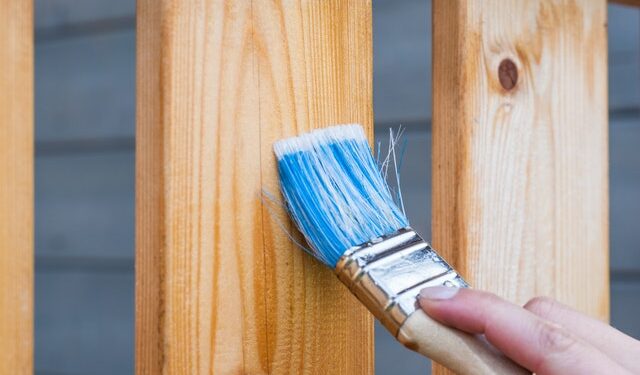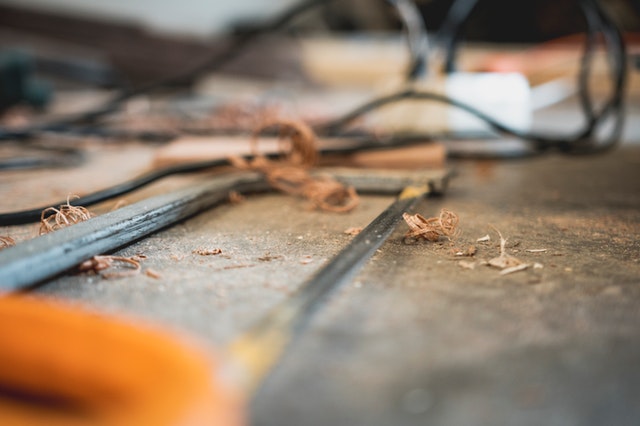How many coats of primer on wood

The number of coats of primer you should apply to wood depends on the type of primer and the type of wood. In general, you will want to apply more coats of primer to porous woods than to non-porous woods. Some primers are designed for one-time use, while others can be applied multiple times. Be sure to consult the instructions on your particular primer for more specific guidance.
What is primer and what does it do
Most people know what primer is, but they may not be aware of all the different things it can be used for. Primer is a type of paint that is applied to surfaces before other coats of paint are applied. It serves as a base layer, and helps the top layers of paint adhere better. Primer also helps to cover up any imperfections in the surface, and can even change the color of the paint that is applied on top.
Wood is a common surface that primer is applied to. In general, you will want to use two coats of primer on wood surfaces. The first coat should be thin, and the second coat can be slightly thicker. You may also want to sand the surface between coats to help the primer adhere better.
How many coats of primer should you apply to wood
Many people don’t realize that the number of coats of primer you should apply to wood depends on a variety of factors. The type of wood, the condition of the wood, and the desired finish are all important considerations. In general, though, it is usually recommended that three coats be applied for optimal results.
Applying primer is an important step in painting any surface, but it is especially important when painting wood. Wood is a porous material that can easily absorb paint, which can lead to uneven coverage and poor adhesion. Primer provides a barrier between the paint and the wood, allowing the paint to evenly coat the surface.
The type of wood you are painting will also affect the number of coats of primer you need to apply. Smooth surfaces, such as those found on newer pieces of furniture, will require fewer coats than rougher surfaces, like those on an older piece of trim. The condition of the wood will also play a role; if the wood is cracked or peeling, more coats may be necessary to ensure even coverage.
The type of paint you are using will also affect the number of coats of primer you need to apply. Water-based paints will usually only require one or two coats of primer, while oil-based paints may require three or more. The desired finish will also play a role; if you are painting a piece of furniture that will be subject to a lot of wear and tear, you may want to apply more primer to ensure better durability.
In general, it is recommended that three coats of primer be applied to wood surfaces. This will provide optimal coverage and adhesion, and will help ensure a long-lasting finish. If you are unsure how many coats to apply, consult a professional painter or home improvement expert.
What are the benefits of using primer
When painting, it is important to use primer. Primer helps the paint to stick better to the surface and results in a more even finish. There are many different types of primer available on the market, so it can be difficult to know which one to choose. In this post, we will discuss the benefits of using primer and provide some tips on how to select the right primer for your project.
Primer provides a smooth surface for painting and helps to cover up any imperfections in the wood. It also helps to protect the wood from any damage that might occur during the painting process.
When choosing a primer, it is important to consider the type of paint you will be using. If you are using a water-based paint, then you will need to use a water-based primer. If you are using an oil-based paint, then you will need to use an oil-based primer. There are also primers available that can be used with both types of paint.
It is also important to consider the color of the primer. If you are painting a light color over a dark color, then you will need to use a light-colored primer. If you are painting a dark color over a light color, then you will need to use a dark-colored primer.
When applying primer, it is important to follow the manufacturer’s instructions. In general, you will want to apply the primer in a thin layer and allow it to dry completely before applying the paint. You may need to apply multiple coats of primer depending on the type of paint you are using and the color of the primer.
If you are unsure about which primer to use, or how to apply it, then you should consult a professional. They will be able to advise you on the best primer for your project and provide instructions on how to use it properly.
How to apply primer properly
It’s no secret that a good coat of primer is key to getting a smooth, even finish on your woodworking project. But how many coats should you apply? And how do you know when it’s done? In this post, we’ll walk you through the basics of priming your woodwork, and show you how to get the best results.
The first step is to sand your woodwork. This will create a smooth surface for the primer to adhere to. If you’re working with new wood, you can skip this step. However, if you’re working with older wood, it’s important to sand it down so that the primer will have a good surface to grip onto.
Next, you’ll need to choose a primer. There are a few different types of primer, but for woodworking projects we recommend using an oil-based primer. This type of primer will provide a good foundation for your paint or stain, and it will also help to protect the wood from moisture.
Once you’ve chosen your primer, it’s time to apply it. When applying primer, always start with a light coat. This will help to prevent any drips or runs. Once you’ve applied the first coat, let it dry for about an hour before applying the second coat.
After the second coat of primer has dried, you can now begin painting or staining your woodwork. If you’re using a paint, it’s best to apply two or three coats for the best coverage. For stain, one or two coats should be sufficient.
Tips for choosing the right primer for your project
Choosing the right primer is essential for a successful woodworking project. There are many factors to consider when making your selection, such as the type of wood, the intended use, and the desired finish. In this post, we’ll provide tips for choosing the right primer for your project.
When choosing a primer, the first thing to consider is the type of wood you’ll be working with. If you’re working with softwoods, you’ll need a different primer than if you’re working with hardwoods. Softwoods are more absorbent, so they require a primer that will seal and protect the wood. Hardwoods are less absorbent, so they require a primer that will provide a good foundation for the paint or other finish.
The next thing to consider is the intended use of the finished product. If you’re making something that will be exposed to the elements, you’ll need a different primer than if you’re making something for indoor use. For outdoor projects, you’ll need a primer that will protect the wood from moisture and UV damage. For indoor projects, you’ll need a primer that will provide a good foundation for the paint or other finish.
Finally, consider the desired finish. If you want a high-gloss finish, you’ll need a different primer than if you’re aiming for a more matte finish. High-gloss finishes require a primer that will provide a smooth surface for the paint to adhere to. Matte finishes can be achieved with either type of primer, but a more absorbent primer will provide better results.
When is it appropriate not to use primer
When you’re painting a piece of wood, you always want to start with a coat of primer. This will help the paint stick better and last longer. But sometimes, you don’t need to use primer at all. Here are three times when you can skip the primer and save yourself some time:
1) When you’re painting over an existing layer of paint
If you’re painting a piece of furniture that already has a layer of paint, you don’t need to prime it first. Just make sure the existing paint is in good condition and is clean before you start painting.
2) When you’re using a paint that doesn’t require a primer
Some paints, like chalk paint, don’t require a primer. You can just start painting with them.
3) When you’re painting a small area
If you’re only painting a small area, like a table top, you can probably get away with not priming. Just be sure to sand the area well before you start painting.
These are just a few instances when you don’t need to use primer. In general, though, it’s always best to err on the side of caution and use a coat of primer before you start painting. This will help your paint job last longer and look better.
How many coats of primer on wood
Primer is an important step in painting because it helps the paint to stick to the surface and look good for a longer period of time. The number of coats you need will vary depending on the type of primer you are using, the condition of the wood, and other factors. Make sure to do some research or talk to a professional before starting your project to determine the best number of coats for your needs.






